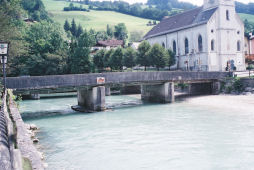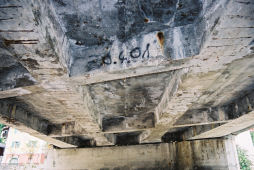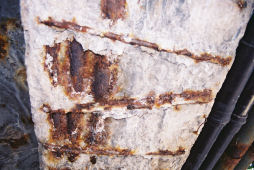Dr Campbell Middleton has just secured funding for a project to investigate the effectiveness and economic benefits of a new technique for assessing the load carrying capacity of concrete bridges in the UK.
This project promises to help save millions of pounds of tax payers' money by correctly identifying bridges in need of repair.
A research programme at the University of Cambridge in the early 1990's led to the development of what is believed to be the most advanced analysis software program for this purpose in the world. This has now been widely used in the UK by various highway authorities and their agents to re-assess the strength of bridges that were deemed unsafe using conventional methods of analysis. However, no study has been undertaken to examine the advantages and disadvantages of employing such advanced techniques, although anecdotal evidence suggests that it has resulted in very significant savings to the UK highway authorities.
In 1987, the Department for Transport introduced a national bridge assessment programme aimed at identifying those bridges on the national highway network that were in need of strengthening or replacement prior to the introduction of higher lorry weight limits in 1999 to comply with European legislation. In 1989, the local authorities in the UK started their own complementary bridge assessment and strengthening programme. This resulted in a massive programme of inspection, assessment, repair and replacement of bridges over the subsequent period. The total cost of this bridge rehabilitation programme has been estimated at £4 billion pounds. In 2006 many bridges have still not been assessed and others which were deemed to be under strength or inadequate are awaiting rehabilitation.
To put the significance of this issue in perspective, £131 million pounds were spent in the UK on bridge assessment and strengthening and a further £72 million on upgrading during the period from 1988 to 1995 alone. A significant number of bridge assessments still remain to be completed under this rehabilitation programme, in particular those on the local road network. Thus, any analysis methods that can be shown to substantially improve upon our current assessment techniques could provide significant benefit to the country.
A recent audit of the national bridge assessment programme by consultant Parsons Brinckerhoff found that overly conservative or inappropriate analysis techniques had been employed in the majority of bridges examined in their study. As a result many bridges have been replaced or strengthened when in fact no such work was required.
The project funding is from the The Rees Jeffreys Road Foundation and will support a UROP (Undergraduate Research Opportunities Programme) student who will join the Bridge Research Group at University of Cambridge for the 10 week duration of the project. The UROP scheme, which originated at Massachusetts Institute of Technology (MIT) and has since been introduced at University of Cambridge, aims to give undergraduate engineering students experience in undertaking research and hopefully encourage them to consider a research career as a result of their experiences. They are employed as researchers over the summer vacation period working under the supervision of a member of staff. The UROP programme provides an ideal opportunity for small research projects to be undertaken whilst also helping train future researchers in the field.
Campbell has also secured funding from the The Rees Jeffreys Road Foundation to support a related second project which aims to undertake case studies of the actual cost of maintenance procedures on a sample of bridges on the highways agency network and perform whole life cost comparison studies on different maintenance strategies based on the data obtained.
In theory, management decisions on maintenance and rehabilitation choices for bridges are based on whole life costing principles and best value judgements. However, there are few, if any, publications giving a detailed explanation of how such evaluations should actually be undertaken or, perhaps more importantly, examples from existing practice demonstrating how this approach has been implemented. It is equally important to question how well expenditure on bridge maintenance matches that originally envisaged at the design stage.
In recent years the Highways Agency has commissioned a number of theoretical studies aimed at developing a preventative maintenance strategy for bridges but there is a perception that these rely heavily on theoretical optimisation algorithms rather than evidence obtained from existing practice. At present no such optimal maintenance strategy has been implemented by the Highways Agency.
The intention is to source the data required from the Highways Agency's Structures Management Information System (SMIS) database and also from records held by Maintaining Agency Contractors (MACS) around the UK. The researcher will firstly collect historical data on maintenance undertaken on a sample of bridges. Costs associated with the different procedures will be collated. A full whole life cost analysis will then be performed on a number of structures using the actual data obtained, and a comparison of outcomes presented. This will then be compared with planned maintenance strategies and cost predictions for the structures. In particular, the balance between lower capital cost and higher long-term maintenance outlays versus higher up-front expenditure in return for reduced disruption and future outlays will be examined. This research will be also be a UROP project over the summer vacation of 2006.




